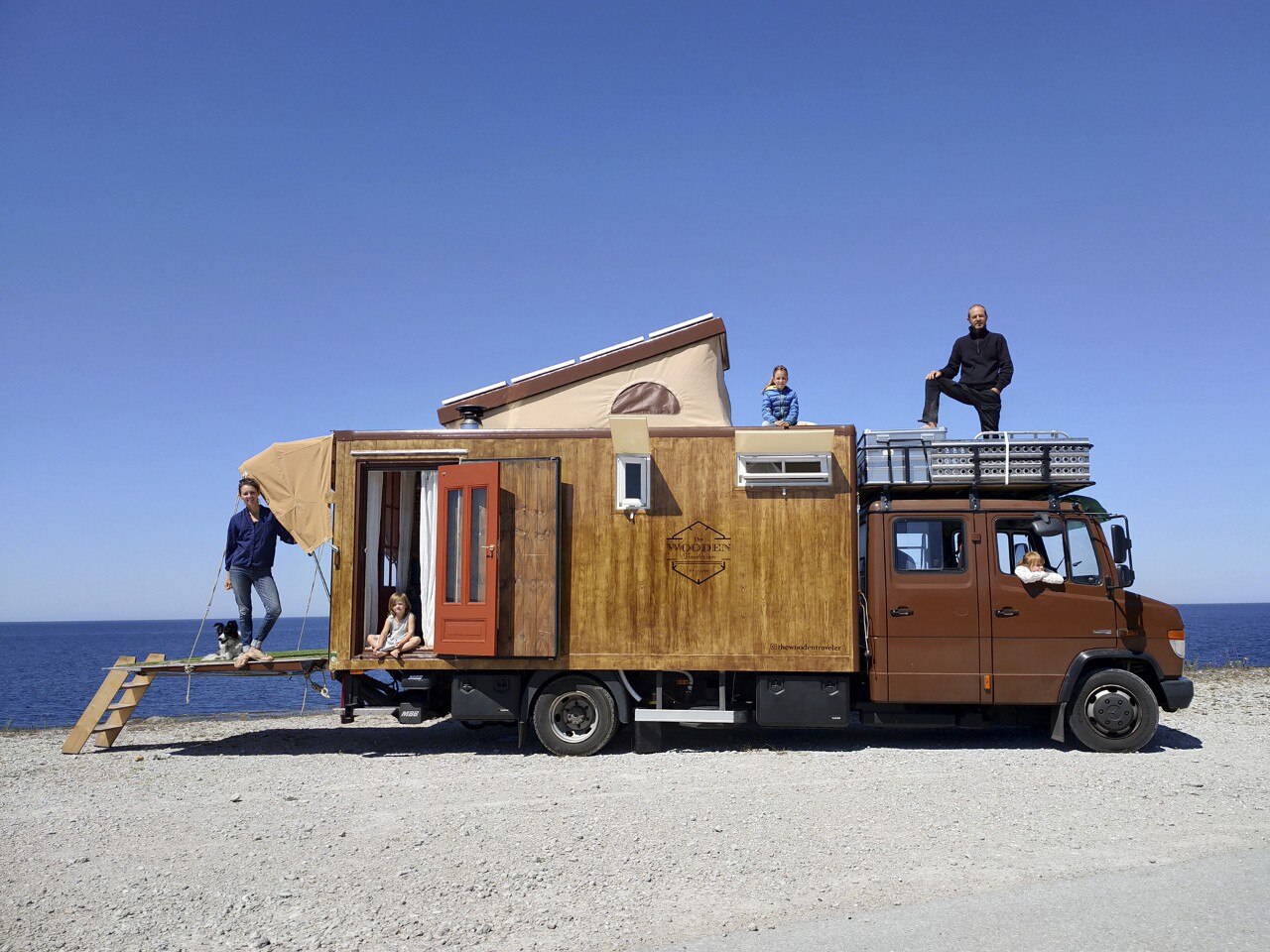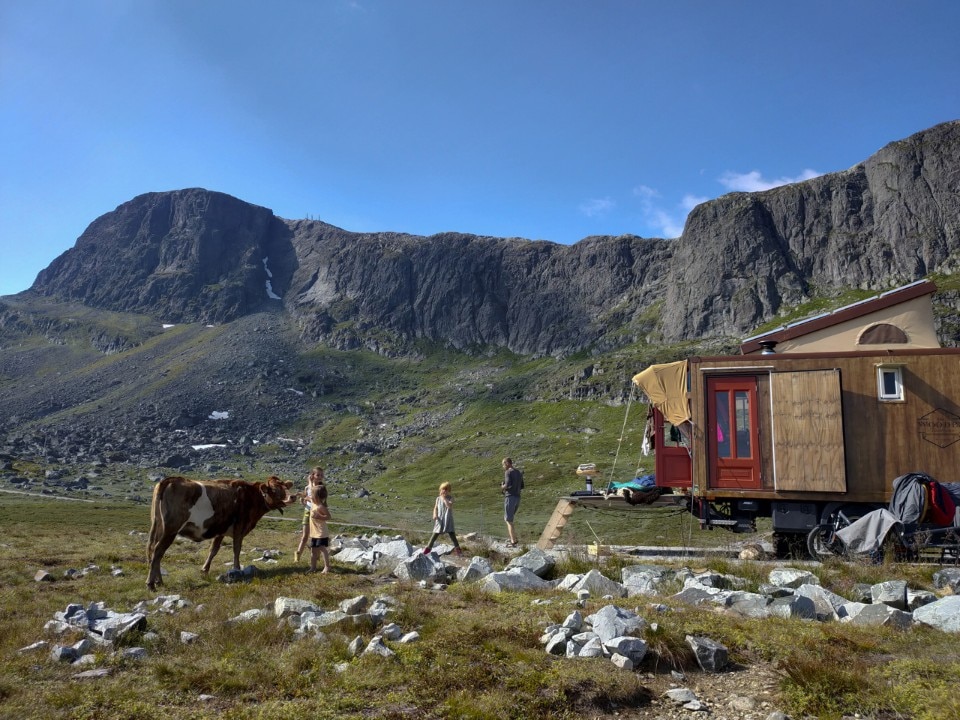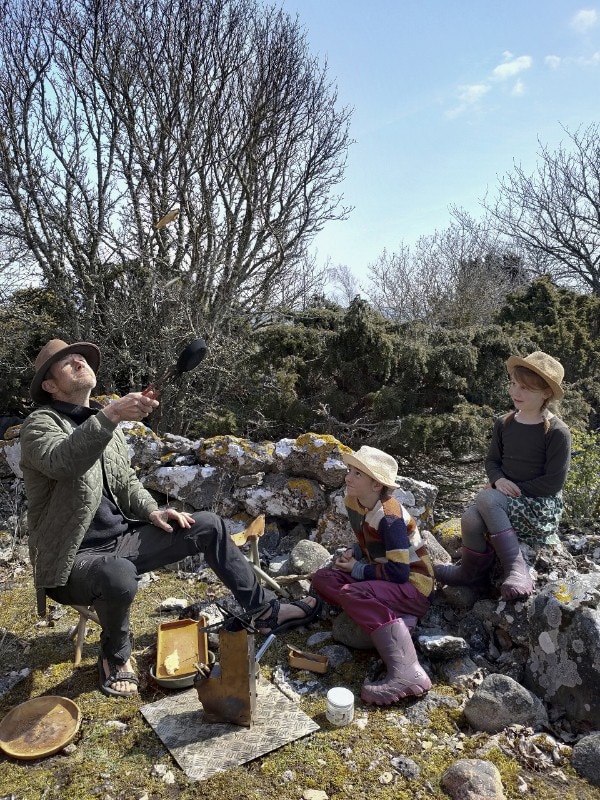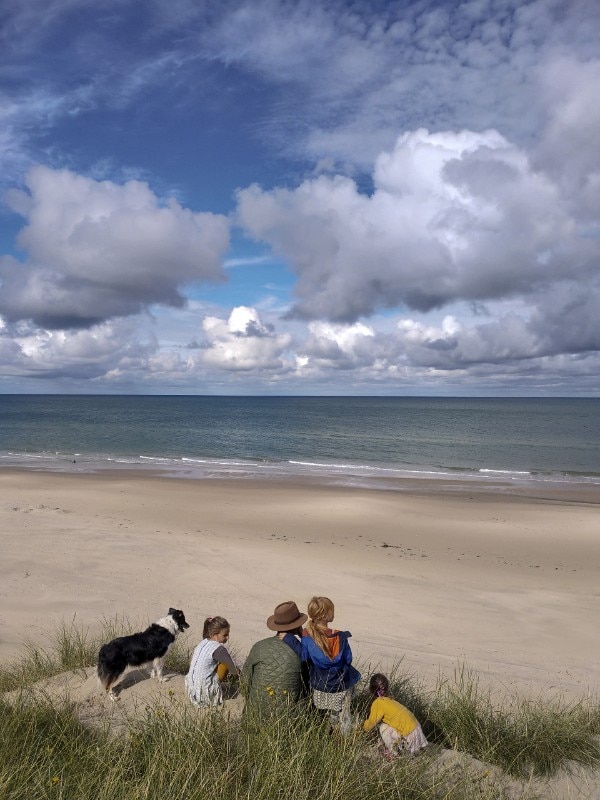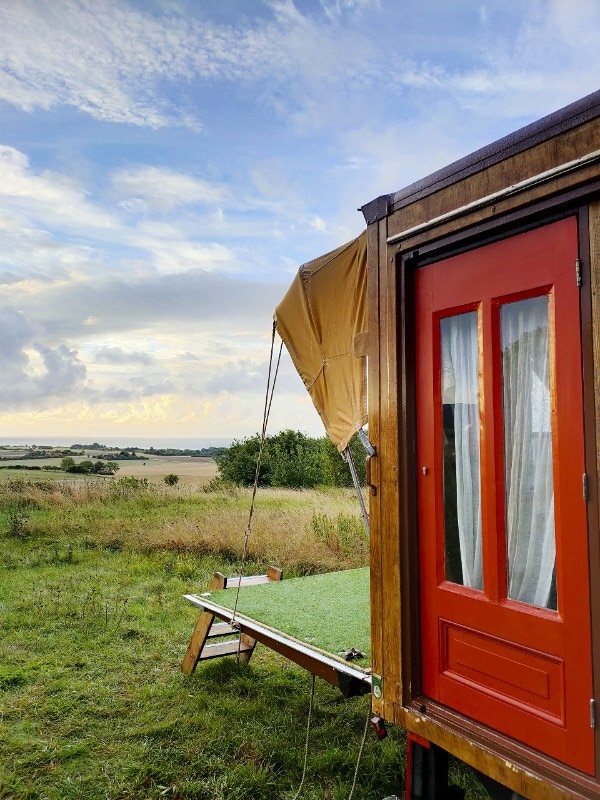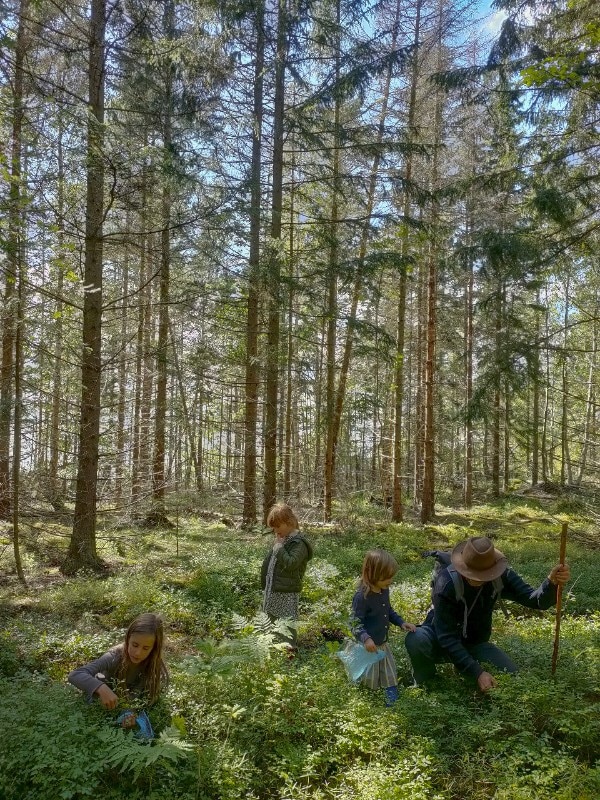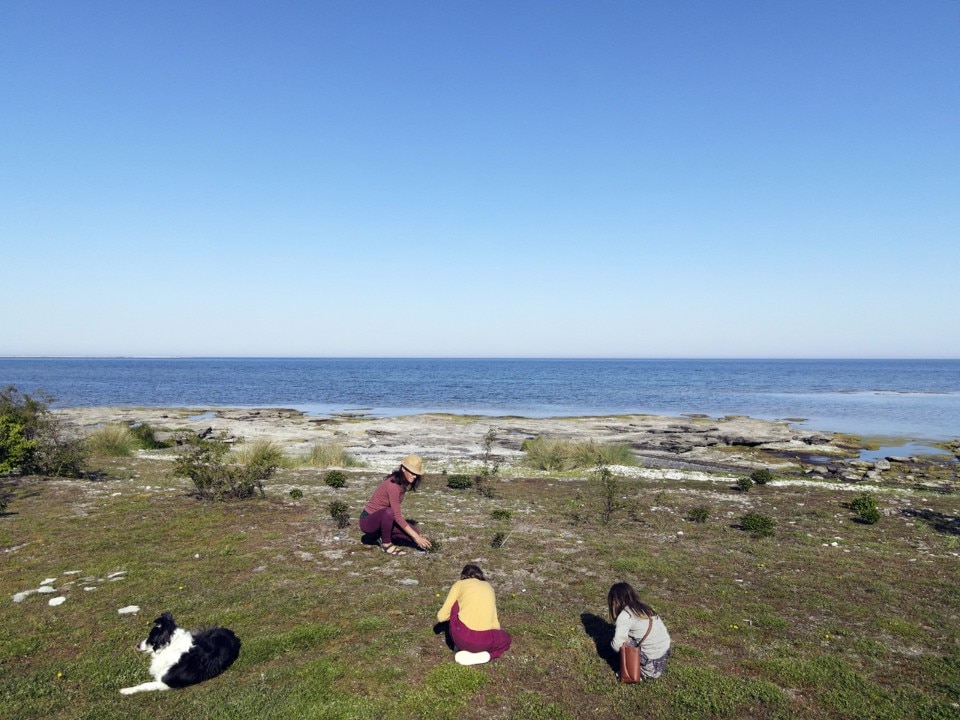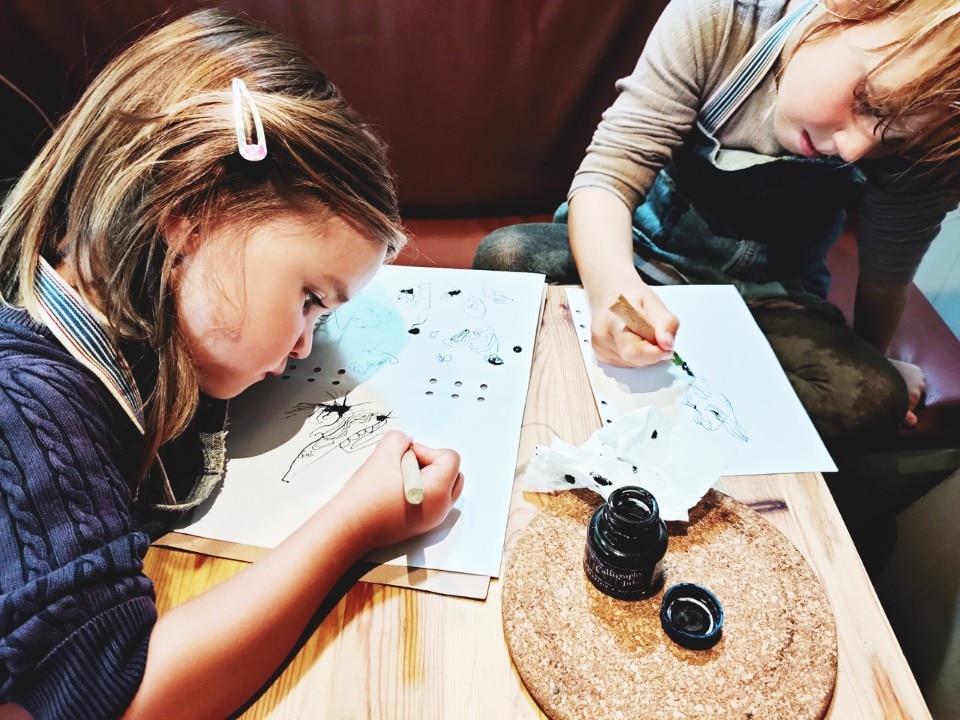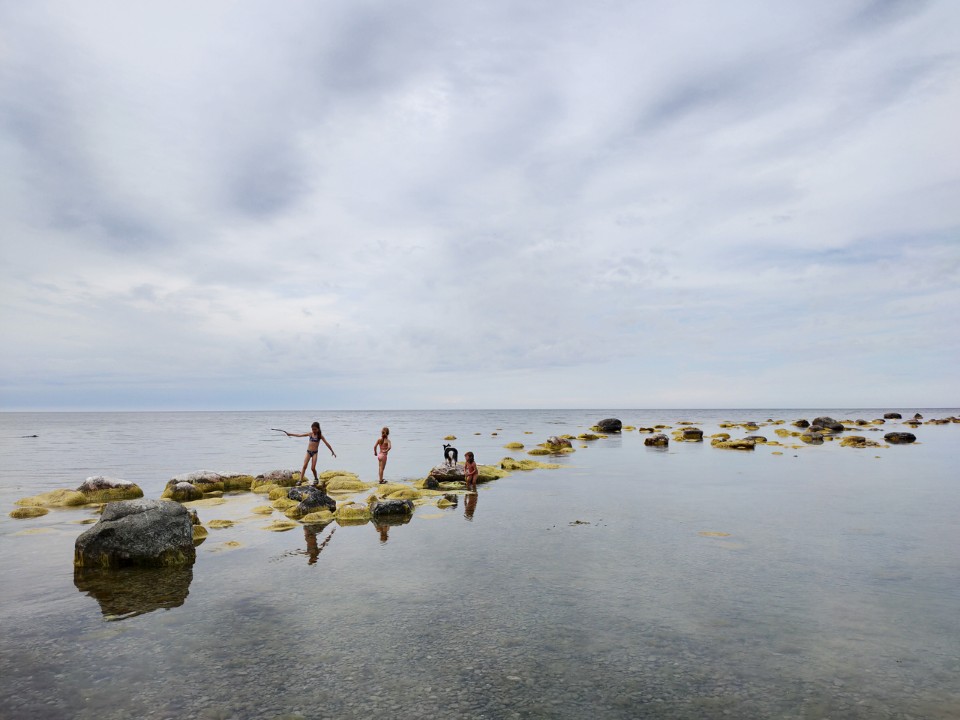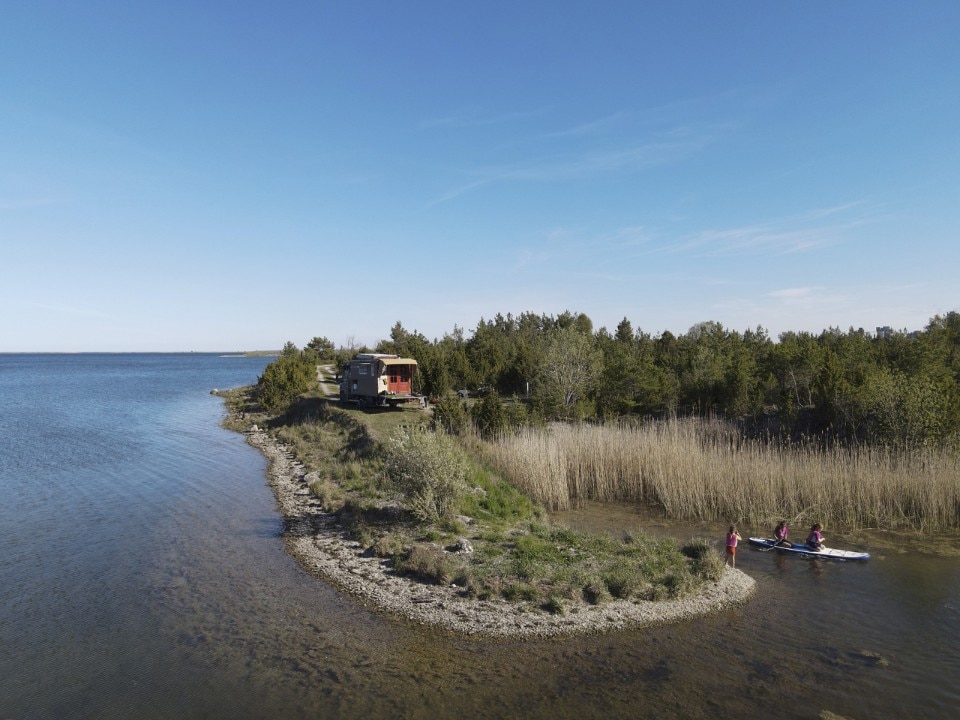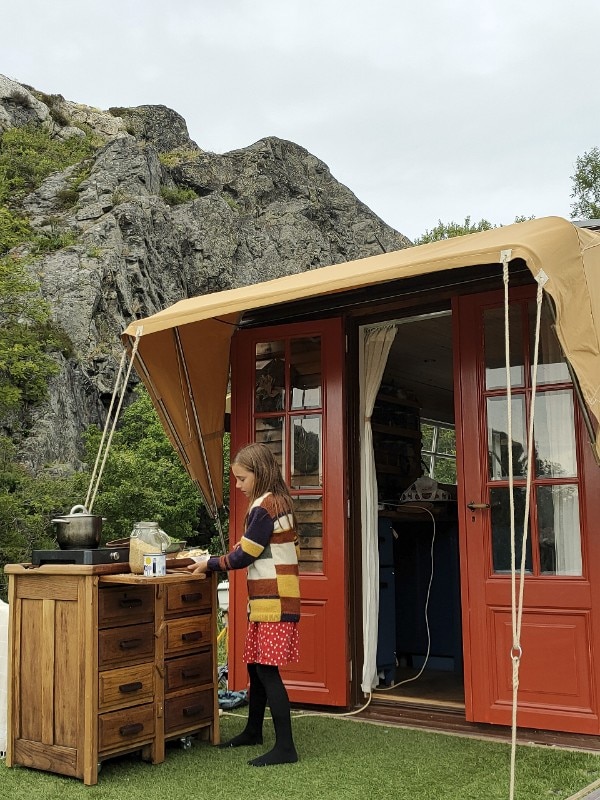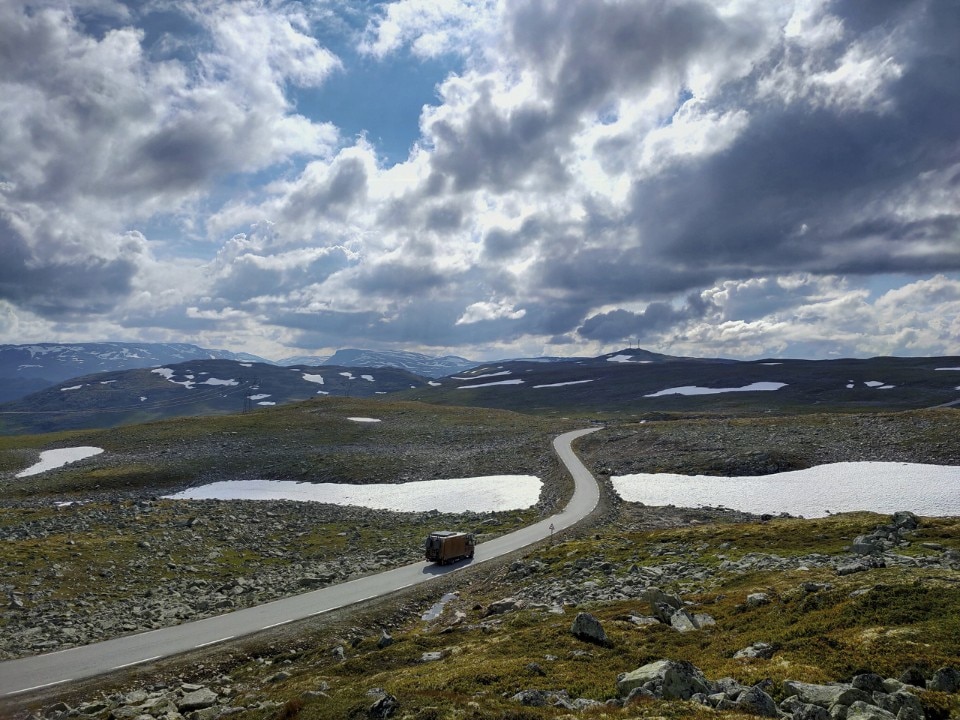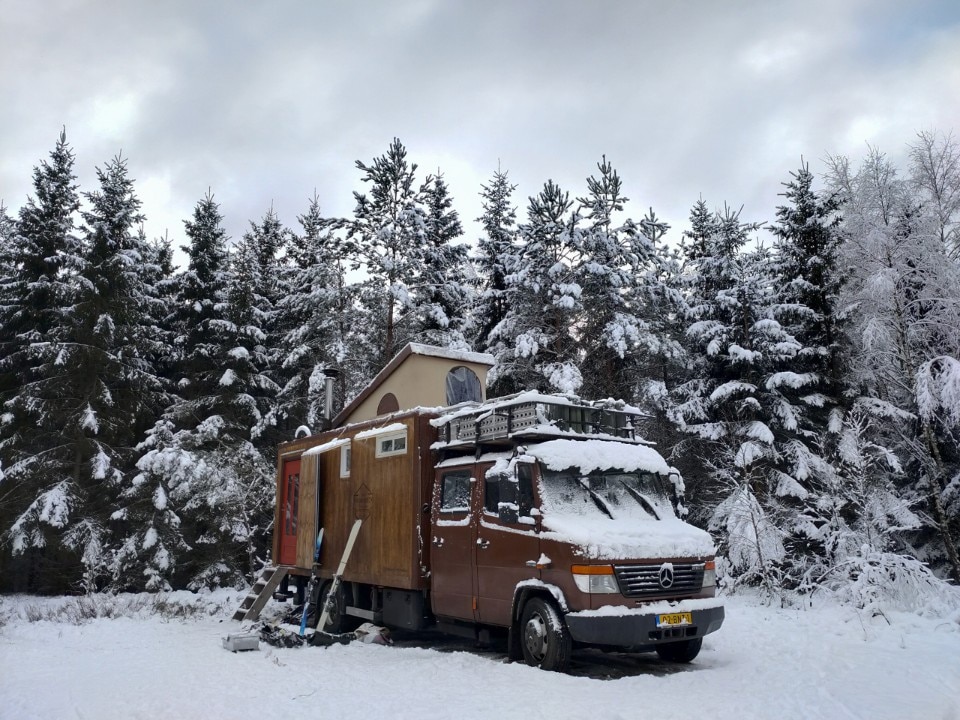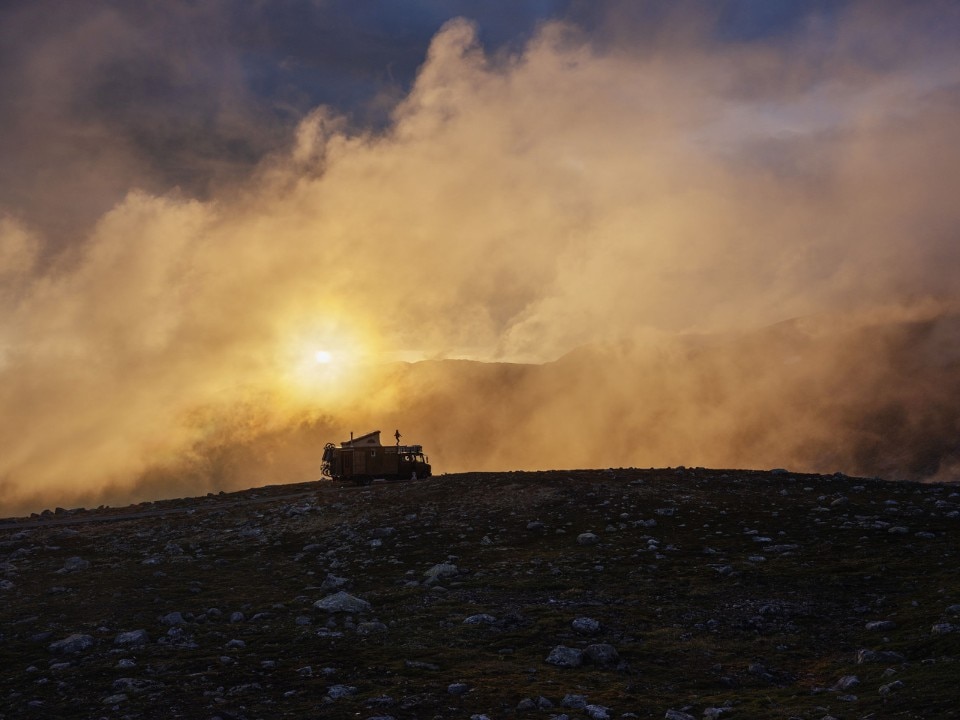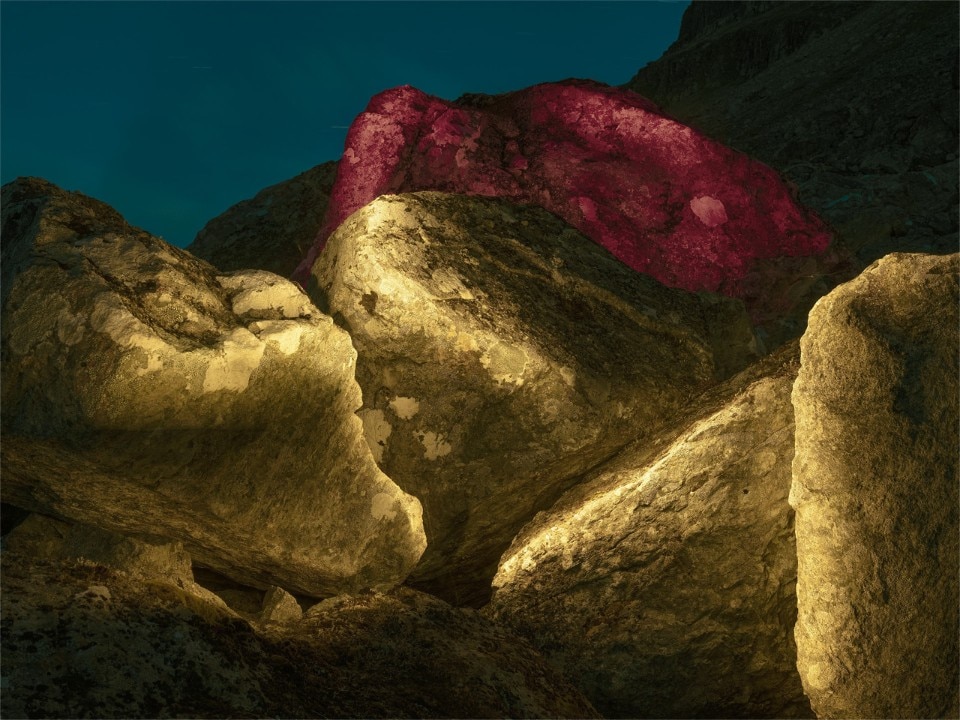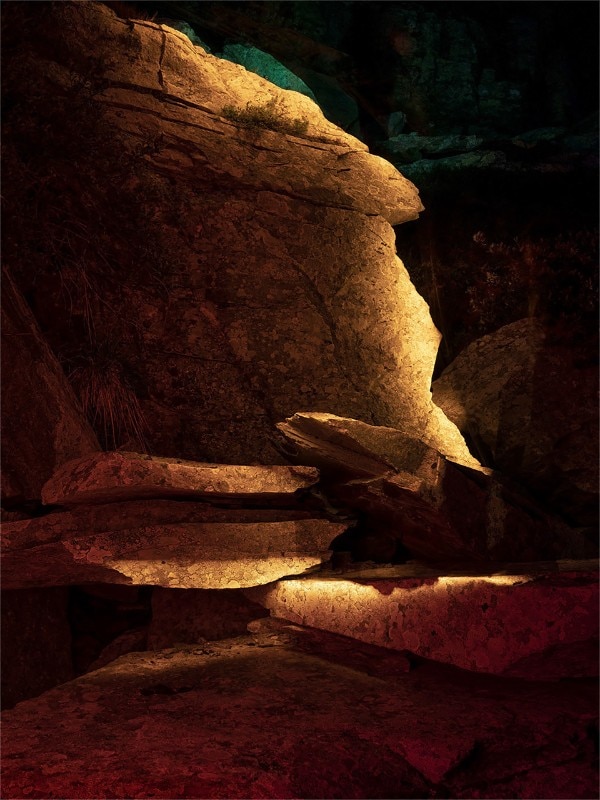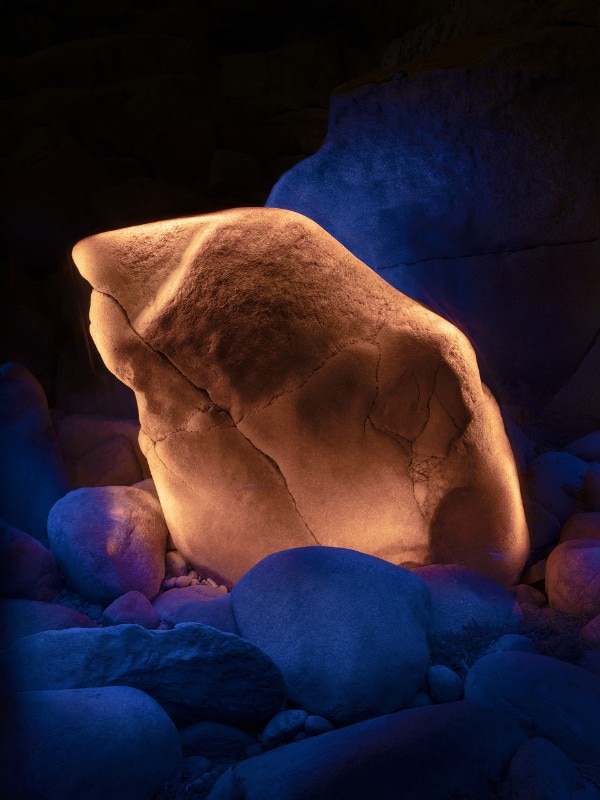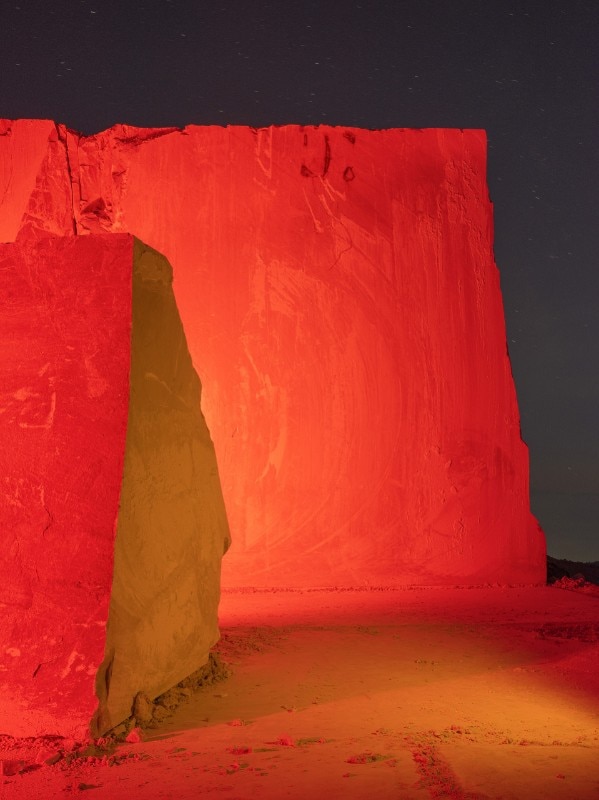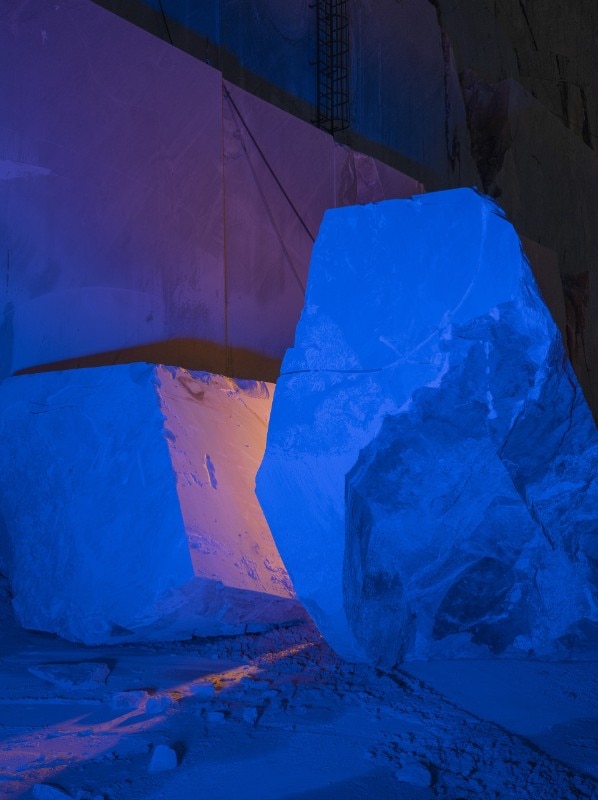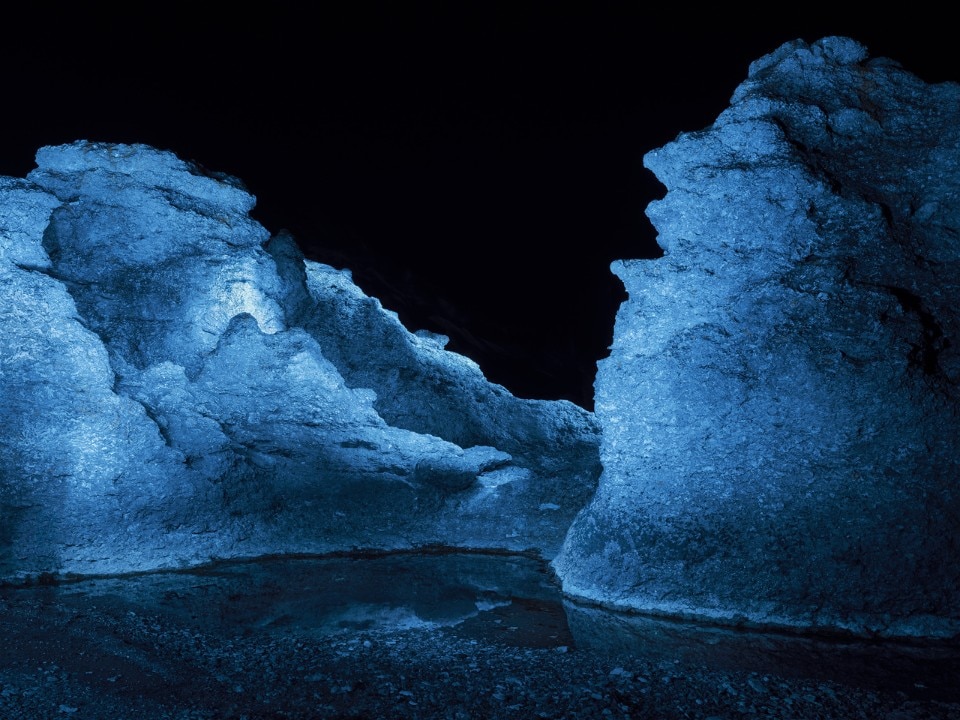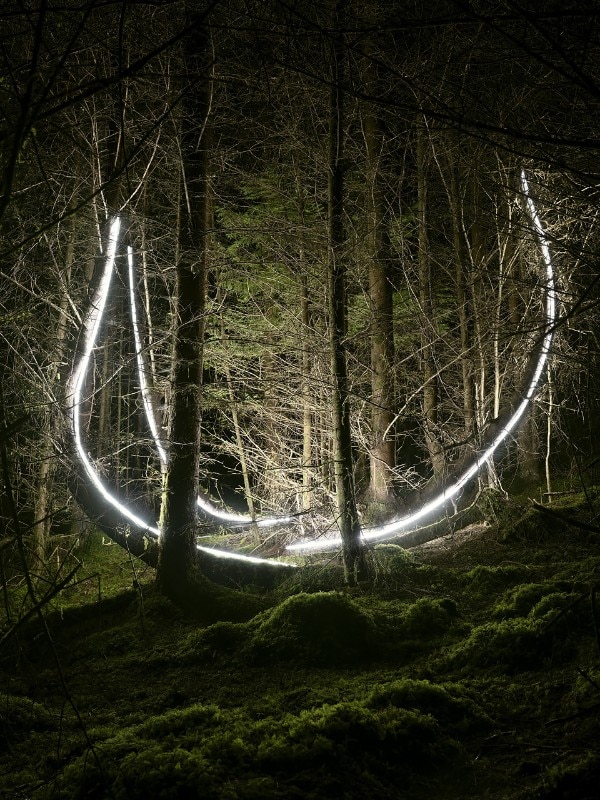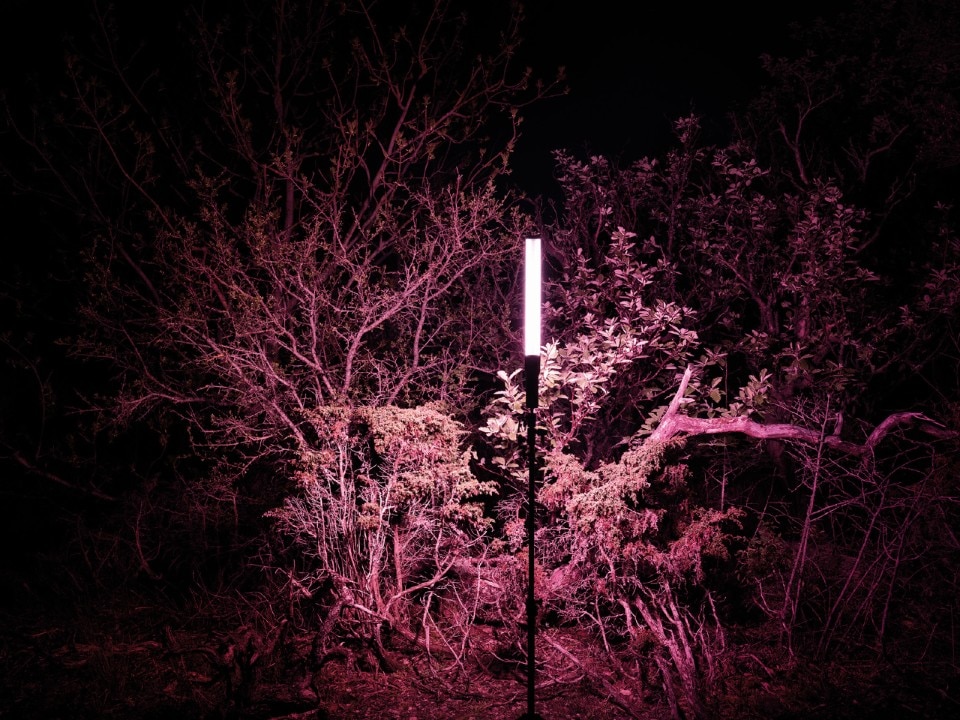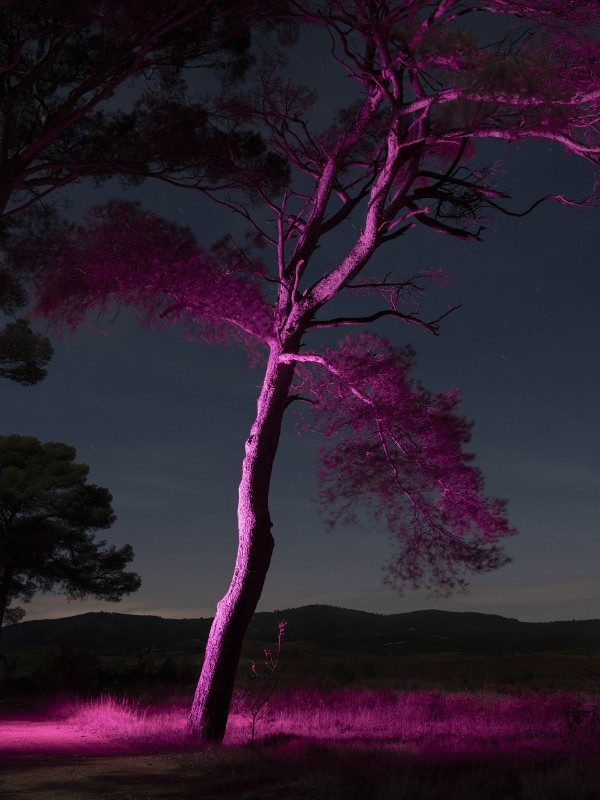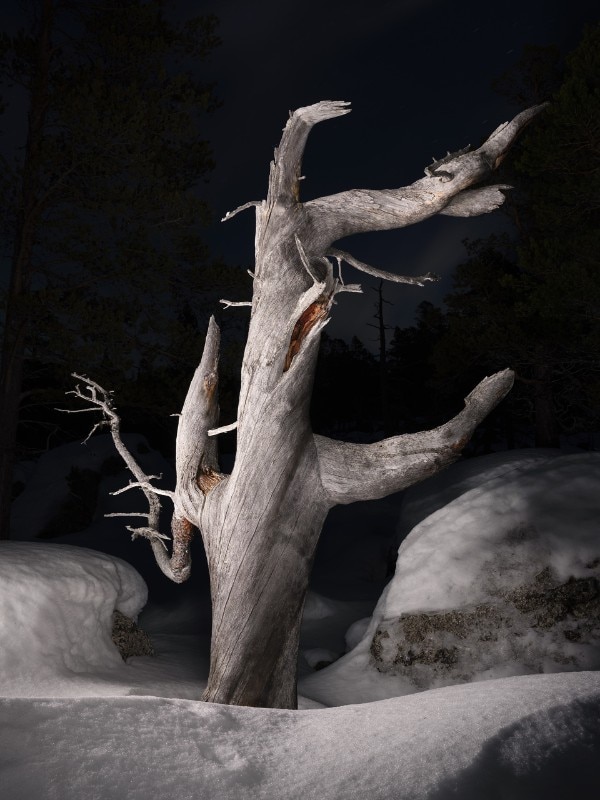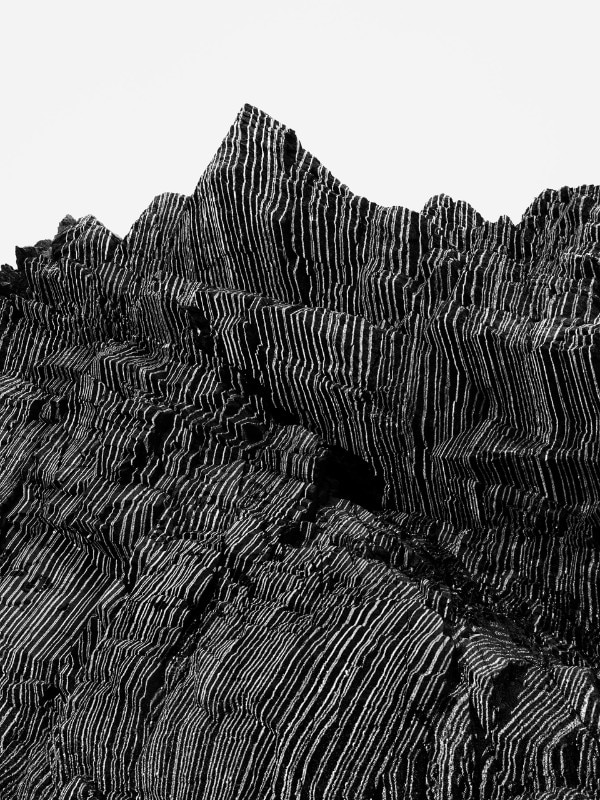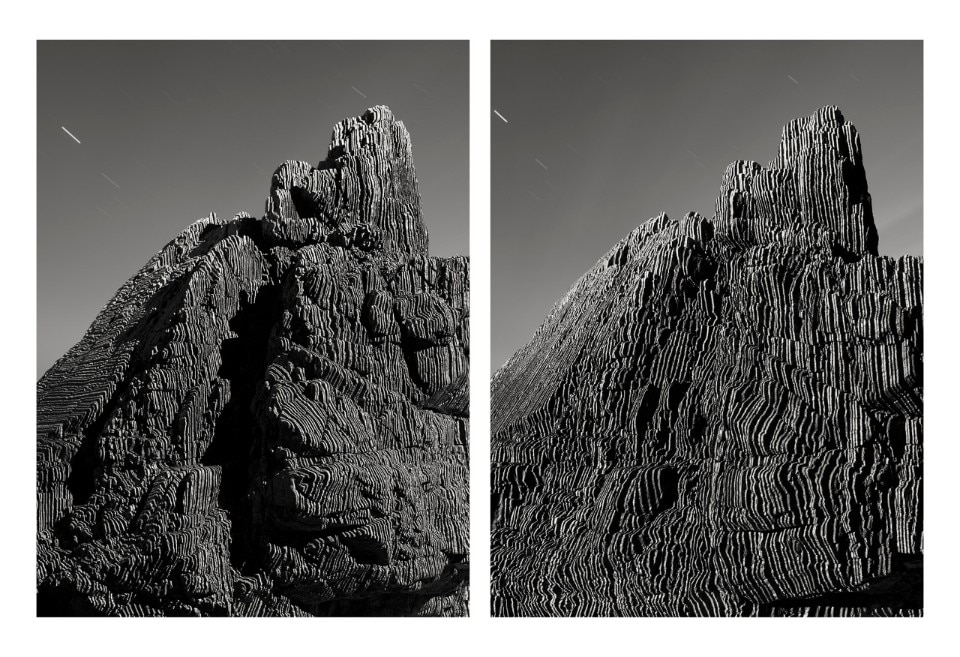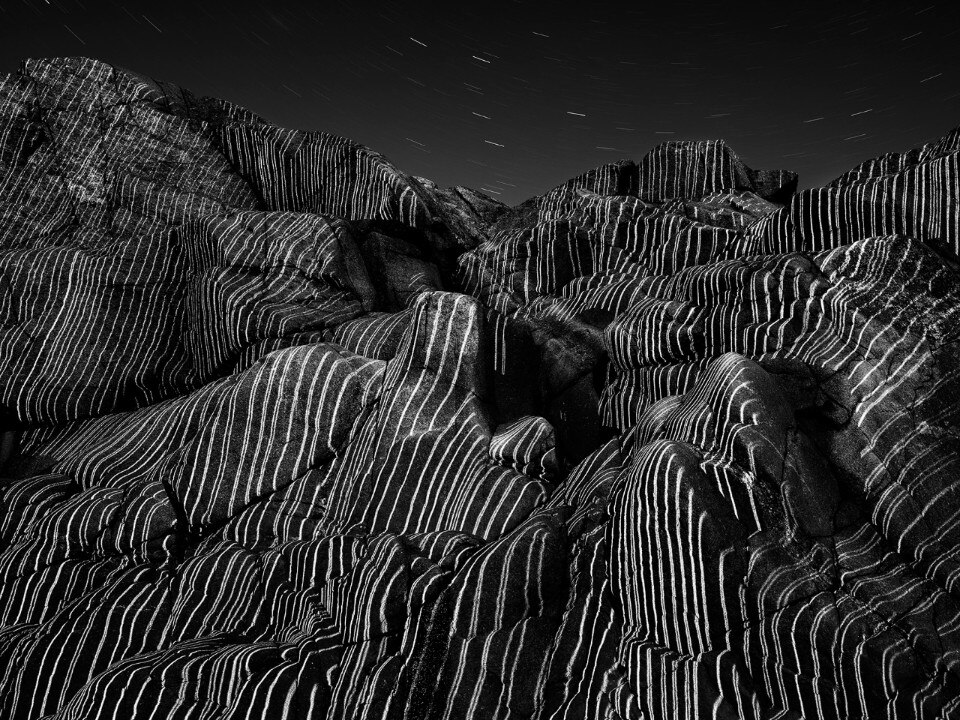They produce luminous and ephemeral installations on the borderline between environmental and land art, and travel since 2017 around Europe in a house on wheels with their three daughters Fenna, Alba and Isolde and their dog Nan. He is Daan Zuijderwijk, the author, she is Maaike Vergouwe and takes care of the exhibitions and communication. Both are Dutch, and both studied photography at the St. Joost Academy of Art and Design in Breda. For years they have decided to take nomadism as a starting point for sustainable art, and together they pursue, slowly but concretely, the possibility of a simpler life, far from civilisation as we know it, and pursue a creative expression that fits in with it, drawing inspiration from it. So that, in the end, art itself can become nourishment for a light existence, which leaves its mark with the least possible impact.
We caught up with them for a brief interview (all answers are by Daan).
What comes first, art or life? What inspired what?
I think the relationship between the art and our life is complex, and therefor it's hard to say what inspires what. But all ideas come from the same source. I mean that my ideas and insights on life and nature-people relationship, reflect in the artworks but also result in the way we live and the choices we make. This way of living gives me the opportunity to look at society from different perspectives and helps me creating new ideas.
You move in that prolific and always interesting creative vein where land art and environmental art meet. How would you define yourself?
That’s exactly where I am. Between land art and environmental art. I would say that I make land art in order to create awareness on the environmental issue. With the life we lead we also try to research an alternative lifestyle with a much smaller footprint.
What technical measures have you taken in your house on wheels?
We insulated the house with 10 cm sheep wool. We have a wood stove for heating and warm water in winter. We have 4 big solar panels on top which provide enough energy for the fridge, lights, computers, induction cooking, and electric bikes. So, when we don’t drive, we don’t need extra energy. We have a water filter system that enables us to make drinking water from a lake or creek. We use a separating eco dry toilet (no chemicals). The key thing is that it's small and simple. When the system is simple, it is more reliable. The lack of space result in less stuff.
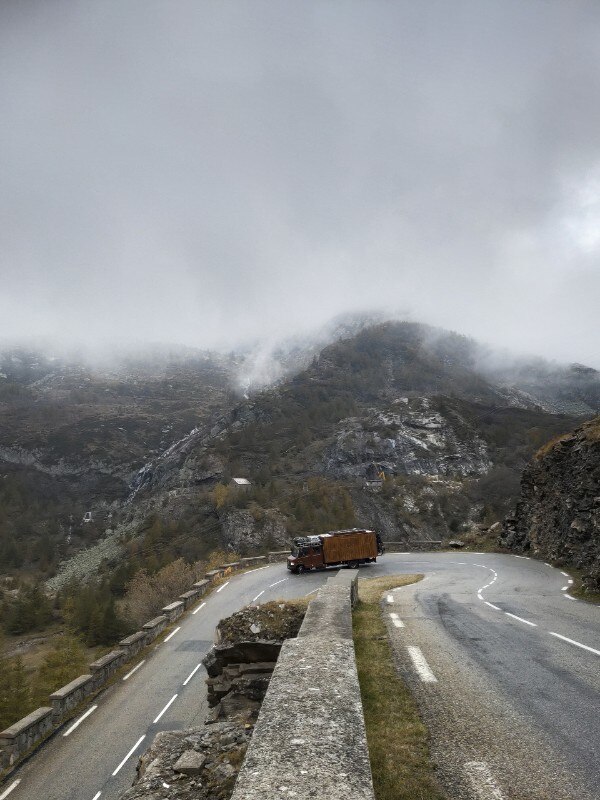
Tell us more about “The Wooden Traveler”: how and when exactly did the idea come about?
The traveling life started back in 2001. I bought an old Dutch transport boat from the 19th century. I renovated it and we start living on it. Because it was a boat, we decided to sail with it instead of putting it in a fixed place. That worked really well for us. We travelled through the Netherlands for more than fifteen years. We discovered that we really like to move around. At that time, we were switching from assignment work to art work, what gave us more freedom. The landscapes became the subjects and after making the first series in The Netherlands we were invited to come to Italy to participate in the Calamita/à project. After working in the Italian Dolomites for a few days it became clear that we wanted to leave Netherlands and explore the European landscapes. The easiest way for us was to travel by motorhome. After renovating the boat for more than ten years I had some ideas about building. We wanted to have a motorhome that had the same sort of feeling as our boat and it had to be big enough for a family of five. So, I built our first wooden traveler in 2016/2017. A few months after Isolde (our third daughter) was born we left for our first trip. Because of our children, this journey was not only about researching and photographing European landscapes, it was also about exploring the nomadic life of a young family.
The way you live therefore has to do with ecology, but paradoxically cannot be separated from a certain idea of freedom. Your children's education and social life could be a controversial issue.
The ecological situation forces us to rethink our relationship with nature. That’s what my work is about, but that’s also what we try to research with our traveling life. Our independence and freedom come indeed with responsibility towards our children. We need to make sure they are educated, that they have a social life and above all, that they are happy. I see our situation as an opportunity to rethink our educational system and give priority to things we think is best for them as an individual. It’s not surprising that we do a lot with nature education, as we believe that a strong bond with nature is essential for future challenges. Our children get a lot of time and freedom to play. We see that within their play there is so much creativity. Within our situation it’s easier to monitor each child carefully in order to give them what they need to evolve. We are aware that there can also be downsides to this situation, but there are downsides to a regular school situation too. I don’t see any controversy. When I look at my children, I see happy, adaptive and social children.
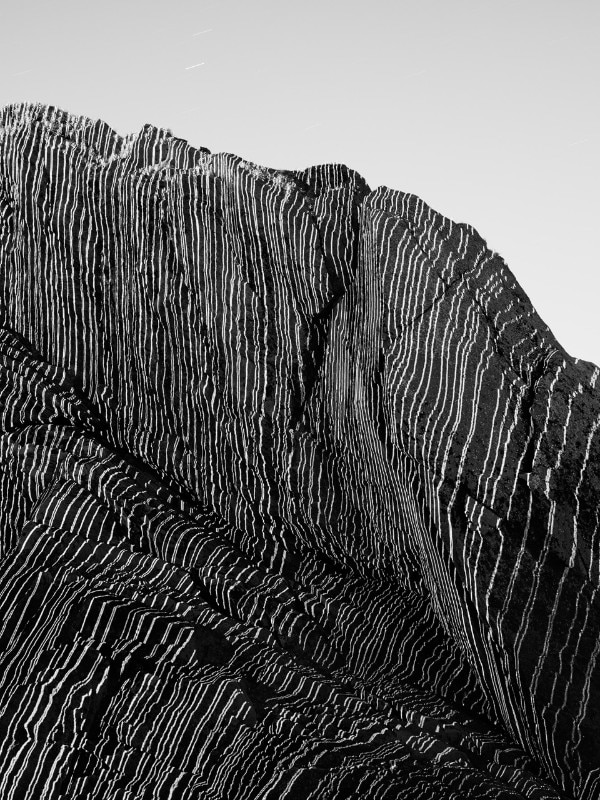
Back to art, how has your poetics evolved from your early works to the present day?
When you research the human–nature relationship as a concept, there are a lot of different aspects you can explore. One of the key aspects for me and therefore really present in my work is perspective. The realization that there are endless possibilities to look at the world result in the variations in techniques that I use in my series. So, when you ask about evolving poetics in the works, it’s a hard question to answer. I strive for simple and clear gestures in order to create monumental images because I think they are the most sustainable.
What will find those who look for the book of your latest project, Mapping?
I am really happy with the Mapping book. It’s a book without any compromise. I put a lot of energy in making the works. The main themes in these works are time and perspective. The endless drawing of lines on the rocks at night felt like meditation. The book designer understood exactly what I wanted with the works and was able to translate the ideas into the design. The result is a pure book which brings you in the right pace to experience the works and gives you the background information you need to create an additional layer.
And what are your plans for the near future?
In the near future I will continue the “Looking for Inua” series. With this series I am trying to investigate the relation between our cultural development and the way it effects our concept of nature. We will keep traveling for a while and continue our quest for a sustainable nomadic lifestyle. On the long term I would like to involve our traveling life into the artworks.
In this respect, although the technological component is clear in your work, there is also something ancestral about it and, among others, Richard Long comes to mind.
It’s great that you mention Richard Long. When I saw one of his stone circles twenty years ago, it blew me away. It’s inspired me so much. What struck me most, was the totality of the work. The work seems so simple, but in the meantime reflect some many different aspects of life. The holistic approach where all parts of the process are included in the work, is something we share with Long. For me it is not only the process of making the work and the choreography that will result in the final art work. It’s also the process within our lifestyle. We are becoming more aware that our lifestyle can be as reflective as the works and therefore be art in its own right as you put it.
To conclude, what can those who follow you learn?
When we look our life as a holistic piece of art, we experience a broad audience. So, you could say that our poetry speaks to a wide variety of people. I especially like the encounters with young people. They can be really enthusiastic about our lifestyle and the perspective we can give them. So, people who follow us can learn that there are many different perspectives to look at the world, the situation they are in and the life they live. Once you realize that your perspective is just one of the many, you can start to explore alternatives. This is what I do in my work and what we do as a family with our life.


